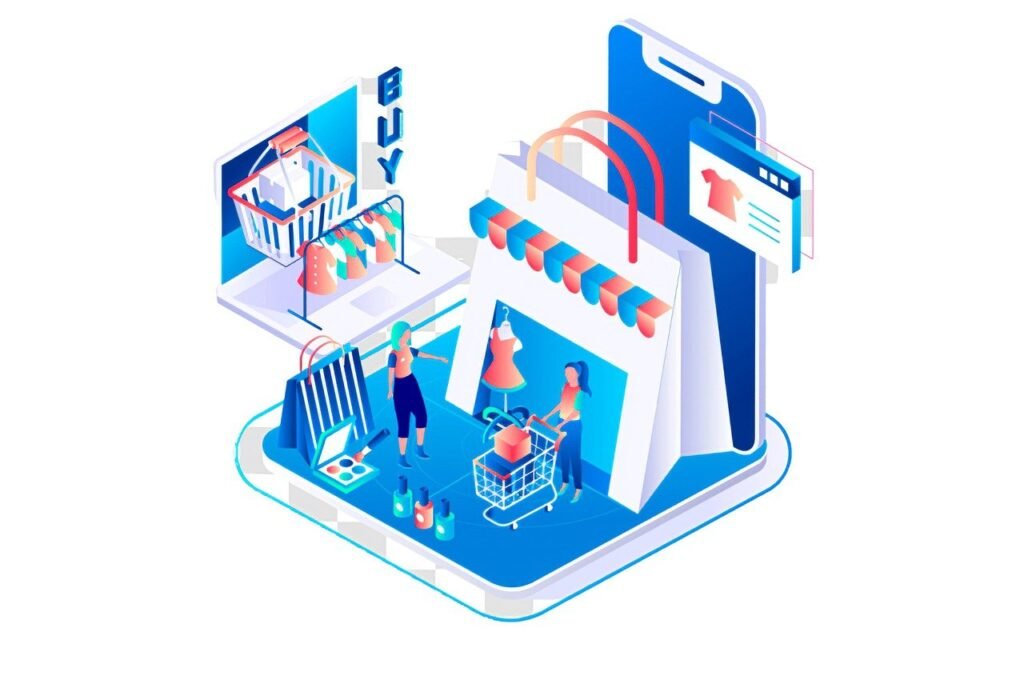This Article has been revised, edited and added to, by Poulomi Chakraborty.
- The Digital Ecosystem and Consumer Behavior: A Comparative Analysis
- Strategic Implementation of Multichannel Digital Marketing Campaigns
- Navigating the Challenges of Multichannel Digital Marketing
- Best Practices for Effective Execution of Multichannel Campaigns
- Integrating Advanced Technologies in Multichannel Campaigns
- Practical Steps to Implement Advanced Technologies in Multichannel Campaigns
- Conclusion
In the ever-evolving landscape of digital marketing, the shift towards multichannel strategies has become more than just a trend—it’s a fundamental approach that brands cannot afford to ignore. Today, consumers interact with brands across a plethora of platforms, from social media and email to websites and beyond. This integration across multiple channels not only enhances customer experience but also boosts the effectiveness of marketing efforts. In this comprehensive guide, we’ll explore why a multichannel digital marketing strategy is crucial and how businesses can implement it effectively to stay ahead in the competitive market.
The Digital Ecosystem and Consumer Behavior: A Comparative Analysis

To truly grasp the importance of multichannel digital marketing, let’s compare today’s digital ecosystem with that of a decade ago. Back in the early 2010s, the digital marketing world was much less complex.
Most online marketing strategies were fairly straightforward, often focusing on either SEO-driven content marketing, pay-per-click ads, or email marketing. Consumers expected to visit websites to find information, and interactions were generally one-dimensional.
Fast forward to today, the digital ecosystem has transformed dramatically. With the advent of advanced technologies and the proliferation of mobile devices, consumer behavior has shifted significantly.
People now expect a seamless brand experience across all platforms—be it social media, mobile apps, email, or even physical stores. They want consistency, personalized communication, and convenience, all at once. This evolution in consumer expectations necessitates a shift in how brands engage with their audience.
The Rise of Integrated Experiences
Imagine a customer discovers your brand through a Facebook ad. Interested, they visit your website, browse your products, but leave without making a purchase. Later, they receive a personalized email reminding them of their cart items with an added incentive—a discount on their first purchase.
Intrigued, they return, make a purchase, and receive an order confirmation via SMS that also invites them to follow your brand on Instagram for style tips and further promotions.
This scenario exemplifies a successful multichannel campaign where different channels work together seamlessly to convert a lead into a customer. Each touchpoint is integrated, providing a cohesive experience that guides the customer through the buying journey smoothly. This level of integration is complex compared to the siloed strategies of the past and requires careful planning and execution.
Measuring Success Across Channels
One of the key components of leveraging a multichannel strategy is the ability to measure and analyze the effectiveness of each channel. Unlike the simpler times when tracking clicks or open rates sufficed, today’s marketers need to delve deeper.
They need to understand how each channel contributes to the funnel and how they interplay to influence consumer behavior. This involves tracking cross-channel engagement, attribution modeling, and using sophisticated analytics to derive meaningful insights that can drive further optimization.
In comparison, the single-channel approach of the past seems limited and ineffective in today’s context. Businesses that continue to rely solely on one or two channels often miss out on substantial opportunities to engage their audience at different stages of their journey. The result is a disjointed experience for customers and potentially lower conversion rates for the business.
This comparative analysis shows why adapting to a multichannel approach is not merely beneficial but essential. By understanding and implementing a strategy that embraces the complexity of today’s digital landscape, businesses can engage their customers more effectively and build lasting relationships.
Strategic Implementation of Multichannel Digital Marketing Campaigns

Establishing a Cohesive Brand Voice Across Channels
One of the first steps in deploying an effective multichannel strategy is ensuring consistency in your brand’s voice and messaging across all platforms. This doesn’t mean posting the same content everywhere; rather, it’s about maintaining a consistent tone and adapting your message to fit the context of each channel while still aligning with your overall brand identity.
For example, the playful and casual tone that works on Instagram might need adjustment for a more professional approach on LinkedIn. Despite these adjustments, the core message about your brand’s values and the benefits of your offerings should remain consistent.
This consistency helps reinforce your brand identity and makes it easier for customers to recognize and feel connected to your brand across various platforms.
Utilizing Data to Inform Strategy
Incorporating data-driven insights is crucial for a successful multichannel strategy. By analyzing data from each channel, marketers can gain insights into customer preferences, behaviors, and the effectiveness of different types of content. This analysis allows for more targeted and personalized marketing efforts.
For instance, if data shows that a significant portion of your audience engages with your emails in the evening, you might schedule your emails accordingly to increase open rates.
Similarly, if certain types of social media posts generate more interaction than others, this insight can inform future content creation, ensuring that it resonates better with your audience.
Integration of Technology
Effective multichannel marketing also requires the right technology to integrate and automate processes. Tools like customer relationship management (CRM) systems, marketing automation tools, and data analytics platforms are essential.
These technologies help streamline workflows, ensure no customer is overlooked, and maintain a unified approach to customer data.
A CRM system can track customer interactions across different channels, providing a comprehensive view of a customer’s journey. Marketing automation can help in delivering timely and relevant content to individuals based on their interaction with your brand.
For example, if a customer visits a specific product page but doesn’t make a purchase, an automated email can be sent to them featuring that product, perhaps with a special offer to incentivize the purchase.
Testing and Optimization
No multichannel strategy should be set in stone. Continual testing and optimization are necessary to refine each channel’s approach and ensure they effectively contribute to the overall goals. A/B testing different approaches in email campaigns, social media ads, and even website design can provide valuable insights that help tweak your strategies for better results.
For instance, testing different subject lines in emails or different images in social media ads can tell you what captures your audience’s interest more effectively. These learnings can then be applied across your campaigns to enhance overall performance and customer engagement.
This strategic approach highlights the complexity and dynamic nature of managing multiple channels but also underscores the potential for significant rewards in customer engagement and business growth. By crafting a strategy that respects and leverages the strengths of each channel, businesses can create a more robust, engaging, and cohesive marketing presence.
Navigating the Challenges of Multichannel Digital Marketing

Addressing Channel Overlap and Confusion
One of the primary challenges in multichannel marketing is managing overlap where the same customer interacts with multiple channels. This can create confusion if not handled properly, as different messages might conflict or compete with one another, leading to a diluted or confusing brand message.
To address this, it’s crucial to have a centralized marketing strategy that ensures all messages are aligned and complement each other, regardless of the channel. For instance, if a promotional campaign is running on social media, the email communications should echo the campaign’s theme and timing, reinforcing the message rather than contradicting it.
Ensuring Quality at Scale
As businesses expand their reach across various channels, maintaining the quality of engagement can become increasingly challenging. There’s a risk that as the quantity of output increases, the quality of each interaction might decrease, potentially harming the brand’s reputation and customer experience.
The key here is not merely to be present on all channels but to excel on each one by providing high-quality, relevant content and interactions. This might mean choosing to be active on fewer channels but doing so more effectively. Prioritizing channels based on where your target audience is most active and responsive allows for more focused and quality-driven efforts.
Resource Allocation
Multichannel marketing requires significant resources—not just financial, but also in terms of human capital. Different channels often require different skills and strategies, from writing email copy to crafting effective social media posts and managing paid ad campaigns.
To manage resources effectively, it’s important to understand the return on investment each channel offers and allocate resources accordingly. This may involve hiring specialists for certain channels or investing in training for existing staff to better manage the specific demands of each platform.
Keeping Up with Evolving Technologies
The digital landscape is continually evolving, with new platforms and technologies emerging regularly. Keeping up can be a challenge, as what works today may not work tomorrow, and new platforms might become essential to a successful strategy.
Staying informed about new trends and technologies is crucial. Regular training sessions for your team and attending industry conferences can help. Additionally, experimenting with new platforms on a small scale before fully integrating them into your strategy allows you to gauge their effectiveness without committing extensive resources prematurely.
Integration and Coordination Challenges
Finally, integrating multiple channels so that they work together seamlessly is no small feat. It requires sophisticated coordination, not only in terms of strategy and branding but also in terms of data and technology infrastructure.
Investing in integration tools like cross-platform analytics and marketing automation platforms can help bridge the gaps between different channels. These tools enable a more holistic view of customer interactions and can automate responses based on customer behavior, making your multichannel strategy more efficient and cohesive.
By addressing these challenges head-on and strategically allocating resources, businesses can enhance their multichannel efforts, leading to more robust engagement and ultimately, greater return on investment.

Related: Check out our free SEO suite

Best Practices for Effective Execution of Multichannel Campaigns
Building a Unified Customer Journey
One of the most crucial aspects of a successful multichannel campaign is the creation of a unified customer journey. This means ensuring that no matter where a customer interacts with your brand—be it on social media, through email, on a mobile app, or even in a physical store—they should feel a sense of continuity and coherence in their experience.
For example, a customer who sees an ad on Facebook and clicks through to your website should find similar messaging and aesthetics on both platforms. If they then receive an email follow-up, the email should not only be timely but also reflect the interaction they just had, possibly offering additional information or a promotion related to what caught their interest initially.
Leveraging Customer Data for Personalization
To make each customer’s journey feel personal and relevant, use the data you collect from various channels to tailor the interactions. For instance, if you know from your CRM that a customer frequently purchases a particular type of product, you can customize the content they receive on social media or via email to focus more on that product category.
Using tools like dynamic content in emails, which changes based on who is viewing it, can also help personalize interactions at scale. This level of personalization makes customers feel understood and valued, which can increase loyalty and conversion rates.
Consistent Yet Flexible Branding
While consistency in branding across channels is key, flexibility is also important to adapt to the different norms and expectations of each platform. The tone and type of content that resonates on Instagram, which is highly visual and casual, might differ from what works on LinkedIn, where a more professional approach is preferable.
The trick is to maintain core elements of your brand identity, such as your logo, color scheme, and key messaging, while adapting the delivery to fit the channel. This approach ensures that your brand is recognizable and relatable across all platforms.
Real-World Examples of Multichannel Success
- Retail Giant: A well-known retail brand uses its website, mobile app, and physical stores to create a seamless shopping experience. Customers can check item availability online, reserve it, and pick it up in-store. Moreover, their app sends push notifications about offers based on the user’s in-store purchases and online browsing behavior, creating a highly personalized shopping experience.
- Technology Firm: A tech company uses webinars, email marketing, and LinkedIn to reach its audience. By hosting informative webinars, they collect email addresses and later send customized follow-up emails with additional resources and product recommendations based on the webinar topics. On LinkedIn, they share industry insights and company news, positioning themselves as thought leaders and building professional credibility.
Continuous Testing and Adaptation
Because digital landscapes and consumer behaviors are always evolving, continuous testing and adaptation are necessary. Regularly testing different approaches in your campaigns and analyzing the outcomes will help you understand what resonates best with your audience and adjust your strategies accordingly.
A/B testing can be particularly useful here, whether you’re testing two different email subject lines, different ad creatives on Facebook, or even two landing page designs. The key is to make data-driven decisions that continually refine and improve your customer interactions across all channels.
By implementing these best practices, businesses can not only improve their current multichannel strategies but also stay adaptable and responsive to changes in the market and consumer behavior.
Integrating Advanced Technologies in Multichannel Campaigns

Leveraging Artificial Intelligence (AI) for Enhanced Customer Interactions
Artificial intelligence has become a pivotal technology in enhancing the efficiency and personalization of multichannel marketing campaigns. AI can analyze vast amounts of data from various channels quickly and accurately, providing insights that can be used to tailor marketing strategies to individual consumer preferences and behaviors.
For instance, AI-powered chatbots can provide real-time customer service across multiple platforms such as websites, social media, and mobile apps. These bots can handle a range of inquiries from basic product questions to more complex service issues, ensuring consistent and immediate response times, which significantly enhances customer experience.
Predictive Analytics for Forecasting Consumer Behavior
Predictive analytics use historical data to forecast future behavior, allowing marketers to anticipate customer needs and preferences and tailor their marketing efforts accordingly. This can be particularly useful in determining the right timing for sending out emails, pushing app notifications, or even targeting ads on social media.
By integrating predictive analytics, businesses can create more targeted campaigns that not only reach the right audience at the right time but also deliver messages that are more likely to convert, based on predicted consumer behavior patterns.
The Role of Augmented Reality (AR) and Virtual Reality (VR)
Augmented reality and virtual reality offer unique ways to engage customers by creating immersive experiences that can be integrated across different channels. For example, a furniture retailer can use AR to allow customers to visualize how a piece of furniture would look in their own home before buying, accessible via their app or on their website.
Similarly, VR can be used for virtual tours of properties, travel destinations, or even virtual events, providing an engaging way to experience a brand or product without physical presence. These technologies not only enhance the user experience but also can significantly increase conversion rates by offering a unique interaction that helps a brand stand out.
Utilizing the Internet of Things (IoT) for Smarter Interactions
The Internet of Things can transform how brands interact with consumers through smart devices. For example, a home appliance manufacturer can use IoT to send maintenance tips or replenishment reminders directly to a customer’s smartphone or smart home hub. This proactive approach not only improves the customer experience by simplifying maintenance but also opens up new channels for customer engagement.
Blockchain for Enhanced Security and Transparency
As multichannel campaigns involve significant data exchanges across various platforms, ensuring data integrity and security becomes crucial. Blockchain technology can offer a solution by providing a decentralized and secure framework for data transactions. For example, in loyalty programs, blockchain can be used to securely track customer actions and rewards across multiple channels, enhancing trust and transparency in the process.
Integrating these advanced technologies into multichannel campaigns not only improves efficiency and customer engagement but also provides a competitive edge by utilizing cutting-edge tools to meet and exceed consumer expectations.
Practical Steps to Implement Advanced Technologies in Multichannel Campaigns

Step 1: Assessing Your Current Technology Infrastructure
Before integrating any new technology, it’s crucial to evaluate your existing infrastructure to identify gaps and areas for improvement. This assessment should consider your current marketing platforms, CRM systems, data analytics capabilities, and any other tools that support your multichannel campaigns. Understanding where you stand will help you make informed decisions about which technologies will offer the most value.
Step 2: Setting Clear Objectives
Define what you want to achieve by integrating new technologies. Are you looking to improve customer engagement, increase personalization, enhance measurement and analytics, or reduce response times? Setting specific, measurable goals for each technology implementation will help you focus your efforts and measure success effectively.
Step 3: Choosing the Right Technologies
Based on your objectives and existing gaps, select technologies that best fit your needs. For AI and machine learning, consider tools that can enhance customer segmentation and personalization. If you’re interested in AR or VR, look for platforms that can integrate these experiences into your existing customer touchpoints. For IoT, identify opportunities where smart devices can enhance customer interaction. Ensure that the technologies are compatible with your current systems to facilitate a smooth integration.
Step 4: Pilot Testing
Before rolling out a new technology across all channels, conduct pilot tests to gauge its effectiveness and impact. Choose a specific segment of your audience or a single channel to test how the technology performs in a controlled environment. Monitor the results closely, and solicit feedback from users to understand their experience and any issues they encounter.
Step 5: Training and Support
Ensure that your team is well-prepared to use new technologies effectively. This may involve training sessions, user manuals, and ongoing support from technology providers. It’s important that your team understands not only how to use the technology but also how it fits into your overall multichannel strategy.
Step 6: Full-Scale Implementation
Once pilot tests confirm the benefits of the technology, proceed with a full-scale rollout. Implement the technology across all relevant channels, ensuring that it integrates seamlessly with other aspects of your campaigns. Continuously monitor the technology’s performance and make adjustments as needed based on real-time data and feedback.
Step 7: Continuous Optimization
Technology and customer expectations are always evolving, so continuous optimization is key. Regularly review the performance of the technology against your objectives. Use data analytics to identify areas for improvement, and stay updated on new features or advancements in the technology that could enhance your campaigns further.
Example: Integrating AI in Email Marketing
Consider a company that decides to integrate AI to personalize email campaigns. The practical steps might look like this:
- Assess Current Infrastructure: Check the existing email marketing platform for AI capabilities or integration options.
- Set Objectives: Aim to increase email open rates by 20% and conversion rates by 10% through personalized content.
- Choose Technology: Select an AI tool that can analyze customer data and automatically tailor email content to individual preferences.
- Pilot Test: Run a pilot campaign with a small segment of the audience, comparing results from AI-personalized emails against standard emails.
- Train Staff: Train marketing personnel on how to interpret AI insights and apply them in designing future campaigns.
- Full-Scale Implementation: Roll out the AI-enhanced email campaign across all market segments.
- Continuous Optimization: Regularly analyze campaign performance and adjust the AI parameters to improve results continuously.
By following these practical steps, businesses can effectively integrate advanced technologies into their multichannel marketing strategies, enhancing both customer engagement and business outcomes.
Conclusion
Integrating advanced technologies into multichannel digital marketing campaigns is more than just keeping up with trends; it’s about strategically enhancing customer interactions and gaining a competitive edge. As businesses adopt tools like AI, AR, VR, IoT, and blockchain, they open up new avenues for engaging with consumers in more personalized, secure, and impactful ways. The key to success lies in careful planning, starting with a thorough assessment of current capabilities and clearly defined objectives.
Pilot testing and continuous optimization are crucial, allowing businesses to refine their approach based on real-time feedback and performance data. Ultimately, by embracing these advanced technologies, companies can create more dynamic, responsive, and effective marketing campaigns that resonate with customers across multiple channels. As the digital landscape continues to evolve, staying proactive in adopting new technologies and adapting to changes will be pivotal for businesses aiming to thrive in the ever-competitive market.
Read Next:
- The Future of Content Marketing: Predictions and Trends to Watch
- Content Marketing vs. Traditional Advertising: Which Delivers Better ROI?
- Behind the Scenes: How Top Brands are Winning with Content Marketing
- 7 Proven Tips to Amplify Your Content’s Reach and Engagement
- How to Craft Content that Resonate with Your Target Audience






















Comments are closed.